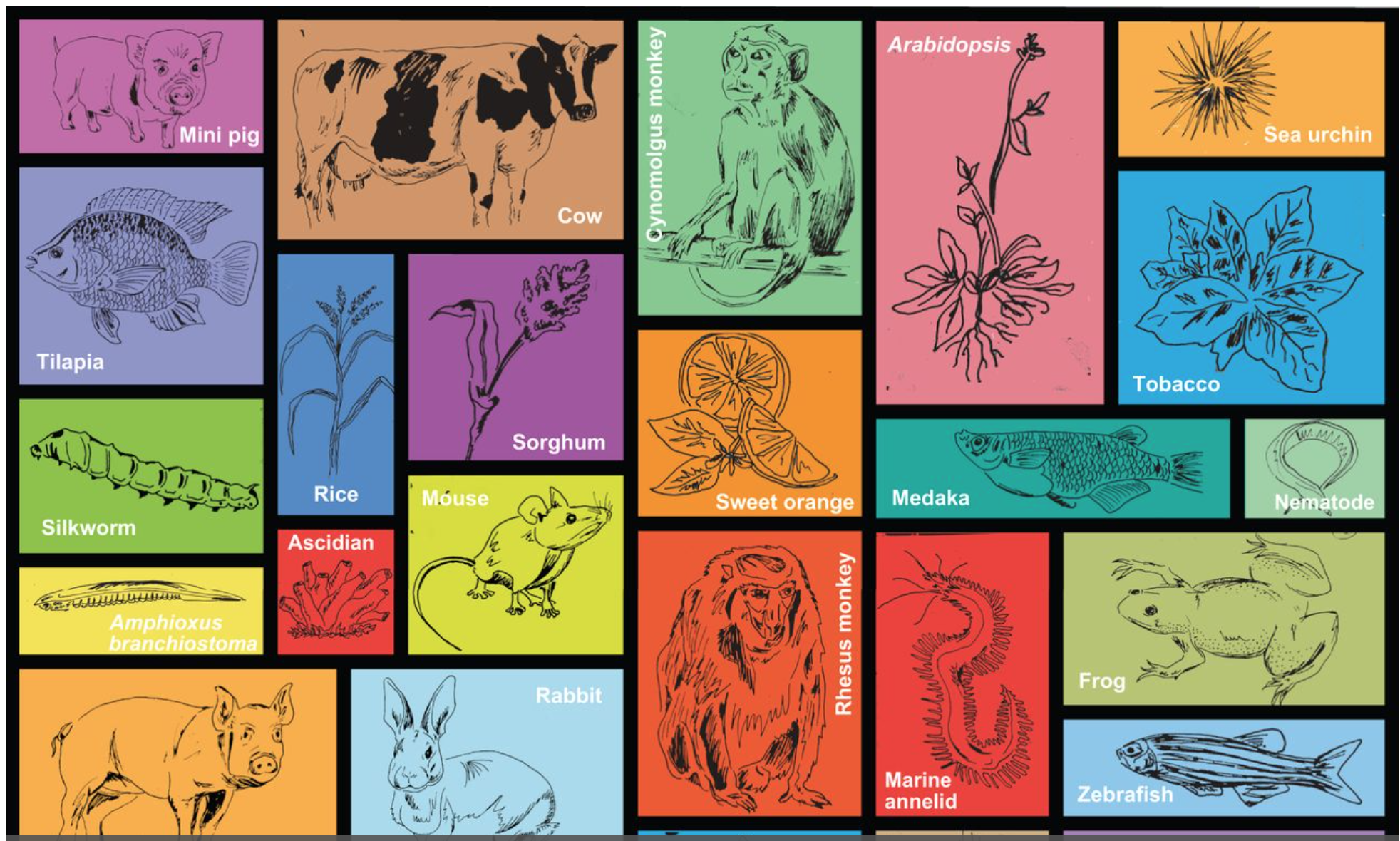Model Organisms
A model organism is defined as a species that has been widely observed in laboratory settings in order to help scientists better understand biological processes. Typically, these organisms are easy to maintain and breed within experimental settings and have specific research advantages. They may maintain a pivotal position on the evolutionary path, for example, proving useful for scientists studying evolution. These non-human species prove useful to experimenters who hope that any discovery made about a specific model organism will be helpful in understanding the components and functions of other related species.
Most commonly, model organisms promote research on human biology and disease as human experimentation is considered unethical and dangerous. Without risking or harming humans, scientists are capable of developing theories and working towards cures to illness thanks to these candidate species. Usually, the species chosen for research on humans possess similar biological and genetic characteristics in order to draw parallels between the species and Homo sapiens.
These species are particularly useful in genetic research. Large and fast-reproducing populations of a particular model organism can allow scientists to track heritable genes through several generations of offspring. Researchers can also detect mutants more easily as the change in DNA may result in the change of a certain characteristic. Candidate species have also proven very helpful in creating extremely detailed genetic maps, which provide a visual representation of the location of certain genes on respective chromosomes. In studying human processes, the most common model organisms are yeast, zebrafish, mice, and monkeys.
Model organisms have been essential to some of the most groundbreaking discoveries in science and medicine. Zebrafish helped scientists develop CRISPR/Cas9, a gene-editing tool, and yeast has been a useful tool in advancing cancer therapy. From a scientific perspective, candidate species are extremely useful, however from an ethical standpoint, experimentation on non-human animals can be seen as extremely cruel. Guidelines and regulations have been implemented in order to avoid unnecessary and harsh treatment of these species, and technology has been developed to provide synthetic cells and biological processes in order to avoid the use of animals in labs.
Picture Source: dev.biologists.org

